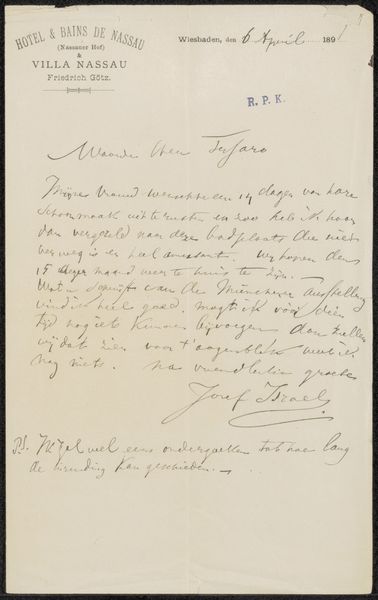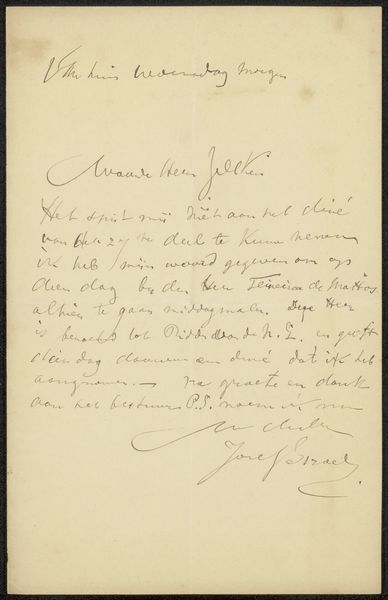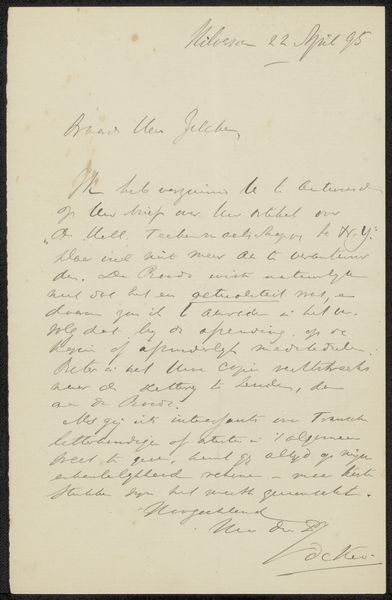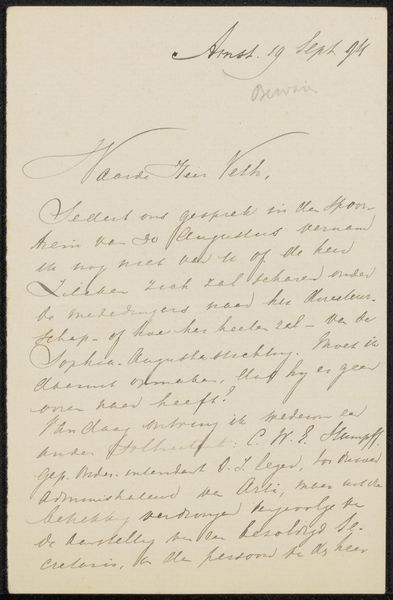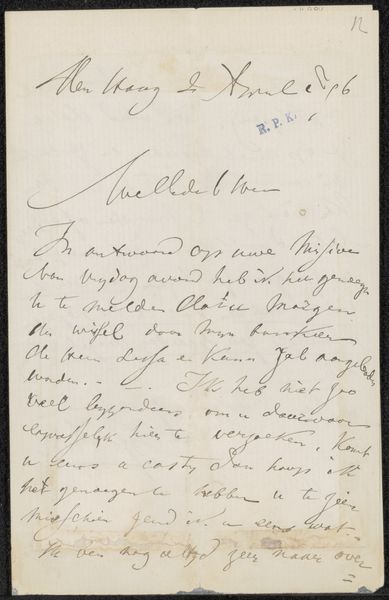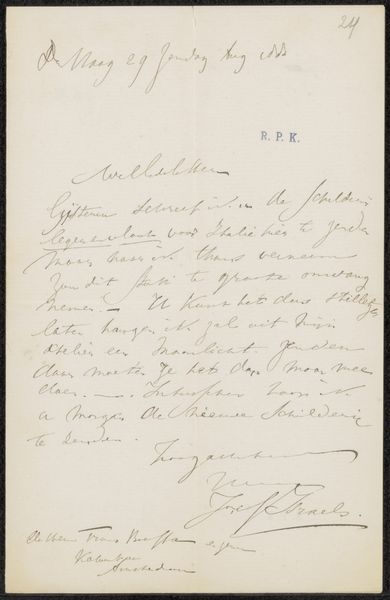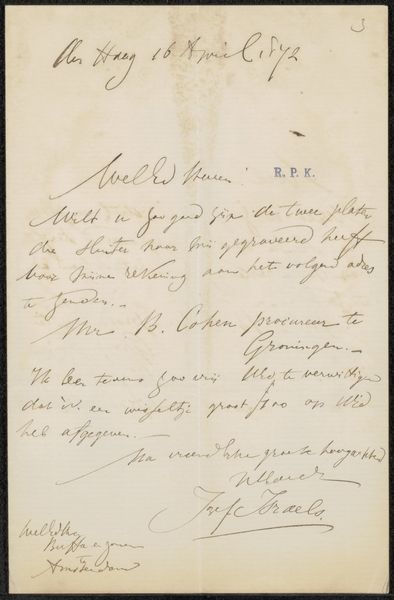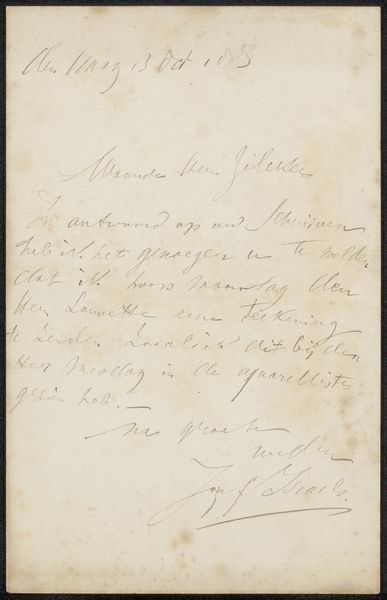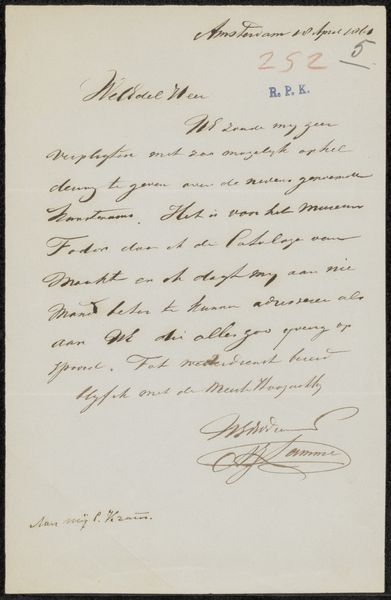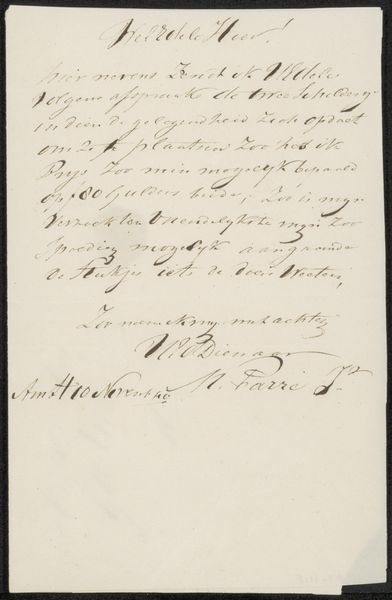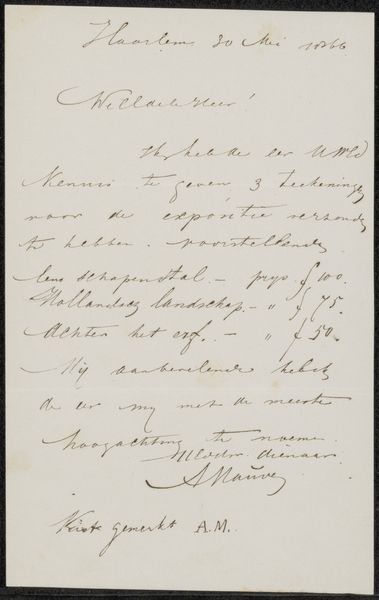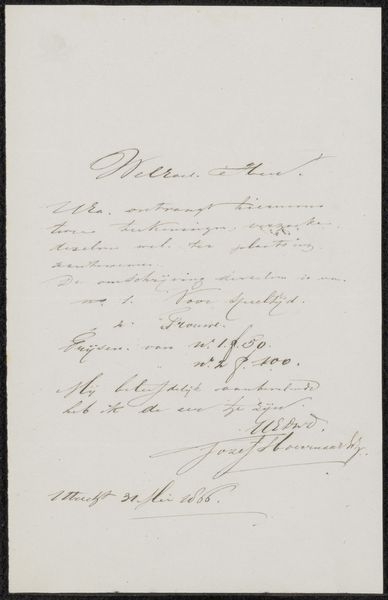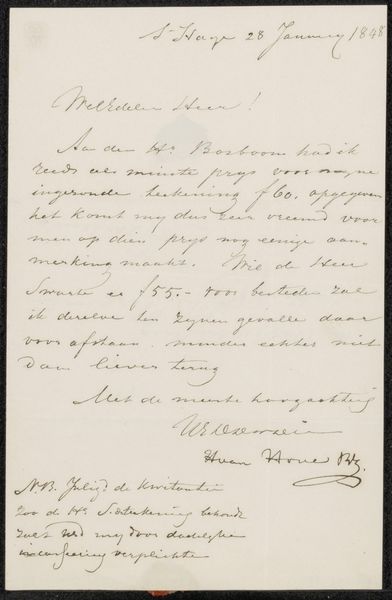
drawing, ink, pen
#
drawing
#
dutch-golden-age
#
ink
#
pen
#
realism
Copyright: Rijks Museum: Open Domain
Curator: Looking at this intriguing piece, we have Jozef Israëls’ “Brief aan Philip Zilcken,” likely from 1886. It's pen and ink on paper, currently held at the Rijksmuseum. What are your initial thoughts? Editor: Immediately, the elegant, looping script speaks volumes. The color suggests age, a certain fragility, but the writing itself is firm and confident. It feels intensely personal, even intimate, despite being on display. Curator: Israëls was a leading figure in the Hague School, and much of his artistic energy was invested in representing the lives of the poor. He would, at the time, have likely sought to engage Zilcken and others to advocate for artistic freedoms in public exhibitions, as art increasingly catered to popular demand in public life. Editor: Indeed. The very act of letter-writing is imbued with layers of cultural meaning. Here, we have an artist reaching out to a fellow intellectual, a conversation unfolding through symbols and shared understanding. It's a bid for connection, for shared recognition. This writing, of course, can become a signifier itself, carrying a certain aura over time. Curator: Absolutely. The materiality also comes into play. Think of paper as a conduit for cultural and political action; a simple sheet upon which reputations can be constructed, institutions challenged, and alliances forged. Its worth lies in the networks that give paper its purpose. Editor: Precisely. This reminds me, too, how artists are constantly negotiating their relationship with the past, looking to their artistic traditions and influences, to inscribe themselves within a historical context. What is the deeper visual culture here? Curator: In his letters to Zilcken and other writers of the time, Israëls bemoans the decline of artistic judgment in exhibition, due to popular demand for art at the time. One could certainly interpret it as an intellectual lament over a quickly shifting art world, and that concern for artistic merit being overridden by capitalist forces of cultural consumption. Editor: Such a concise little vessel of thought, desire, and advocacy. After examining Israëls’ script, and learning some context, the letter feels very vulnerable. Curator: A private gesture broadcast across the ages—a perfect blend of intention and accident.
Comments
No comments
Be the first to comment and join the conversation on the ultimate creative platform.
